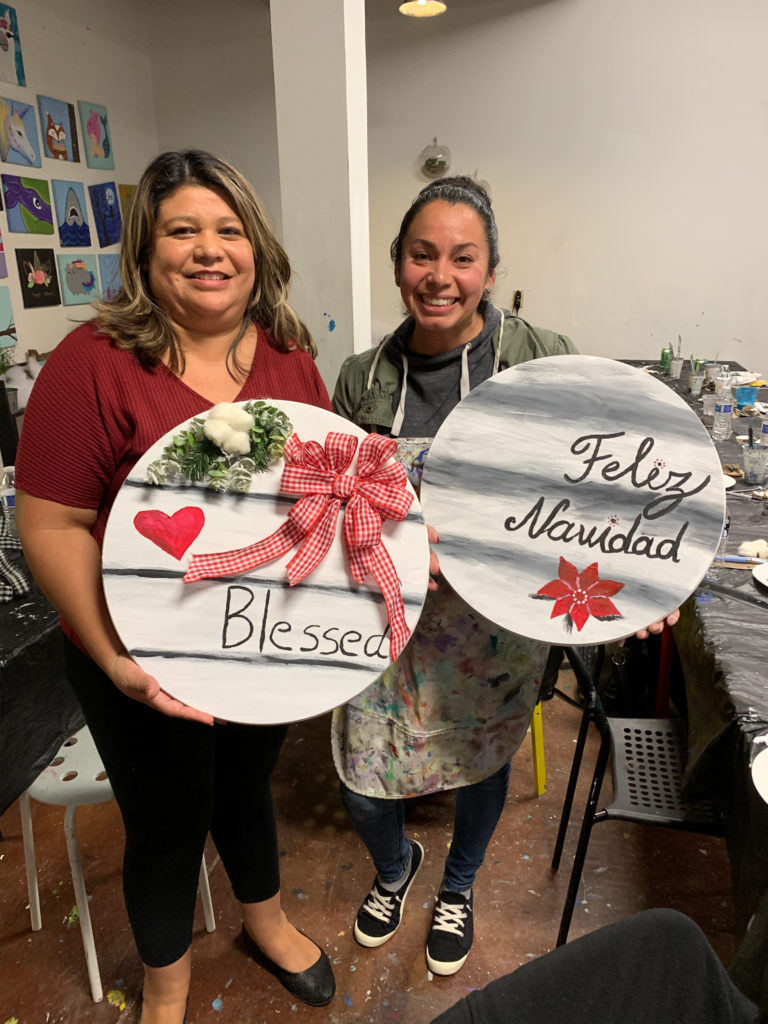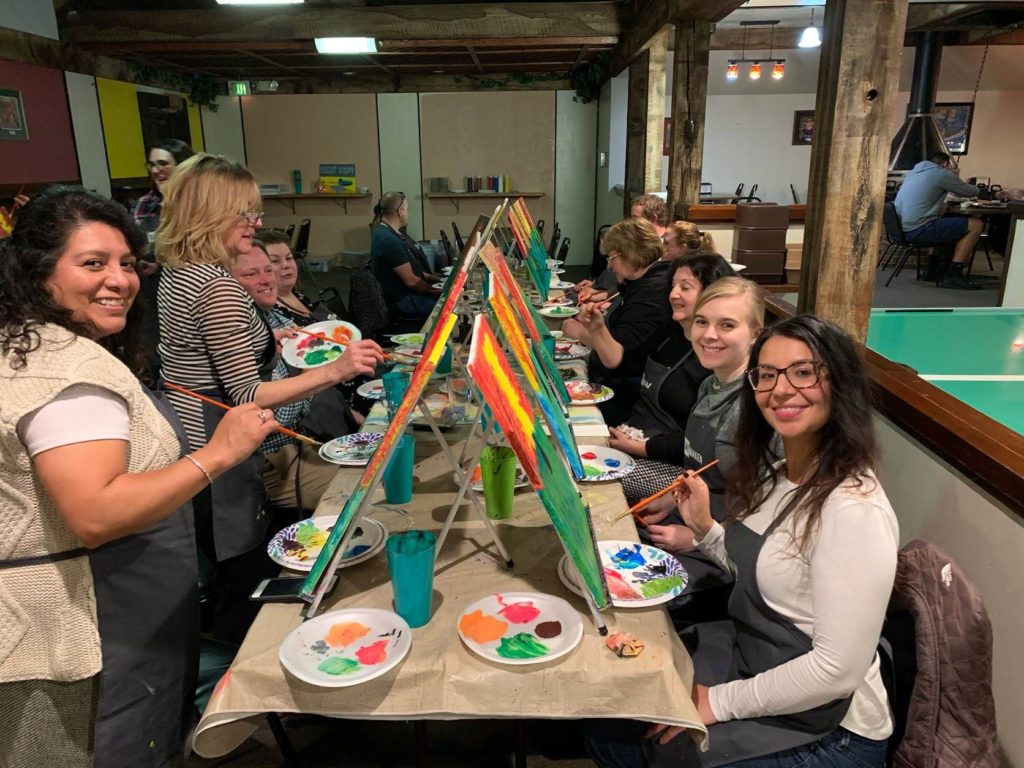As school districts, ESDs and community colleges prepare to start another academic year, it’s important to remember that everyone has been enduring so much during the pandemic. In that light, fostering a work environment that intentionally includes community care can help everyone have a more positive, supportive and empathetic return to work.
“We can only be at our best, however, with the support and love of our community. Self-care and community care are deeply connected, and we need both for healthy and resilient communities.”
– Alison Brill, MPH
Community care is what it sounds like – members of a community caring for one another. In the context of school employees, this can include the following:
- Making time for staff to socialize and deepen relationships with one another
- Providing trainings about equity, inclusion and diversity
- Educating staff about mental health and suicide prevention
- Creating peer groups or mentorships
- Developing safe, staff focused spaces for walks or physical activity

>How can a School Employee Wellness Grant help?
A School Employee Wellness (SEW) Grant from OEA Choice Trust can help you build, increase and sustain a workplace that actively encourages, models and integrates community care. The SEW Grant provides recipients 4-5 years to spend up to $100,000. OEA Choice Trust staff support grantees and can share guidance and resources that are grounded in best and promising practices.

Willamette ESD staff show signs they painted as a school employee wellness activity.
What Could Community Care Look Like in a School Employee Wellness Program?
Community care can look different depending on the needs of the community. When planning a school employee wellness program, it’s important to give staff the opportunity to share their needs and interests. It’s also important to consider that staff in different sectors of the workplace may have different needs based on their job responsibilities, worksites and schedules.
Another important consideration for wellness programs and community care is to listen and reflect on the diverse voices of staff. By creating spaces where staff feel comfortable to share what wellness means to them, the wellness team can develop supports for community care that are inclusive and help all staff feel welcome to participate.
“By taking care of each and every person in the community, with the knowledge and understanding that we all experience times of vulnerability, a shared sense of responsibility is created. This responsibility creates a safer environment with less judgment and more acceptance, which in turn promotes individual and community healing and resilience.”
– Alison Brill, MPH
The following are community care ideas that have been implemented by OEA Choice Trust grantees and past grantees:
Expanded mentorship program – Tillamook School District used grant funds to expand their mentorship program to include mid-career teachers. They wove wellness into the topics covered by the program and mentors and mentees checked in regularly around personal well-being.
Basketball hoops – Tigard Tualatin School District used grant funds to purchase basketball hoops for the Transportation Department staff. By listening to staff interests and altering the work environment, the wellness team is supporting ongoing opportunities for collective care.
Picnic tables – Seaside School District and Tigard Tualatin School District both added picnic tables to their campuses, creating spaces for staff to eat outdoors while enjoying each other’s company.
Walking trails – St. Paul School District, Seaside School District and Klamath Community College added walking trails to their campuses, providing staff with spaces to walk together. At Klamath Community College, leaders invited staff to go on walks with them.
Potlucks – Willamette ESD held healthy potlucks at different staff hubs. The superintendent attended each event to express gratitude to employees and build the relationship between leadership and staff.
Wellness time – Vernonia School District and Willamette ESD administrators allow and encourage staff to spend a certain amount of work time per week focused on their well-being. By messaging and modeling this practice, leaders can help shift the workplace culture and actively support employee self-care and community care.
Question, Persuade, Refer training for staff – Corvallis School District trained staff in Question, Persuade, Refer (QPR) to help staff become aware of the signs of suicide and empower them to take compassionate action. This also integrated mental health and community care into the culture of the district.
Listening sessions – Northwest Regional ESD’s wellness team held multiple listening sessions with staff to hear about their unique needs and interests related to the wellness program. In efforts to ensure that the wellness program is inclusive, employees of color were invited and encouraged to share their ideas and perspective. The wellness team plans to use the data collected to inform their wellness opportunities.
Chat and doodle – Lebanon School District created virtual spaces for staff to get together, talk and doodle. These sessions provided employees with times to connect and express care for one another.
Virtual cooking classes – Fern Ridge School District’s Food Service Manager, Alan, held a virtual cooking class after work. Staff who wanted to cook along purchased the ingredients to make the recipe and cooked along with Alan. Attendees could view all the food preparation steps and ask questions. The demonstration was recorded and shared on the Fern Ridge School District YouTube channel.
Tillamook School District also held cooking classes and dropped off the ingredients at each participant’s door, like a meal prep delivery service. Attendees got together on Zoom to make no-bake recipes like salsa and granola.
Social events – Vernonia School District’s wellness team hosted social events such as staff bowling and paint nights to give staff the opportunity to connect and enjoy each other’s company.
Hobby sharing – Klamath Community College held Zoom meet ups at which staff shared crafts and hobbies they were working on; these sessions were recorded and uploaded to their YouTube channel for staff wellness so others could watch them later.

Willamette ESD staff smile during a Paint Night event.
If you have questions about how a School Employee Wellness Grant could support your organization, please contact Asta Garmon, School Employee Wellness Program Manager: asta@oeachoice.com
Resources and Related Reading:
When Self-Care Becomes Community Care – Healthline
It Takes a Village: The Self-Care and Community Care Connection – Alison Brill, MPH; Massachusetts Public Health Blog
Why Community Care is the Perfect Companion to Your Self-Care Practice – Shine

